Content strategy and business strategy are mutually dependent. Business in the digital space requires a strategic approach to all facets of content. This lecture contains arguments against the belief that in the digital world, opportunistic action is the best way to secure success.
Business strategy in the digital world is a paradoxical phenomenon. On the one hand, almost all successful digital companies have a defined, recognisable and excellently implemented strategy, i.e. they do not just work reactively and tactically. On the other hand, the digital business reality is so complex and so changeable that companies with traditional strategic approaches regularly fail in it. What does strategy mean under these conditions and how can a strategy process be designed?
What is a strategy? #
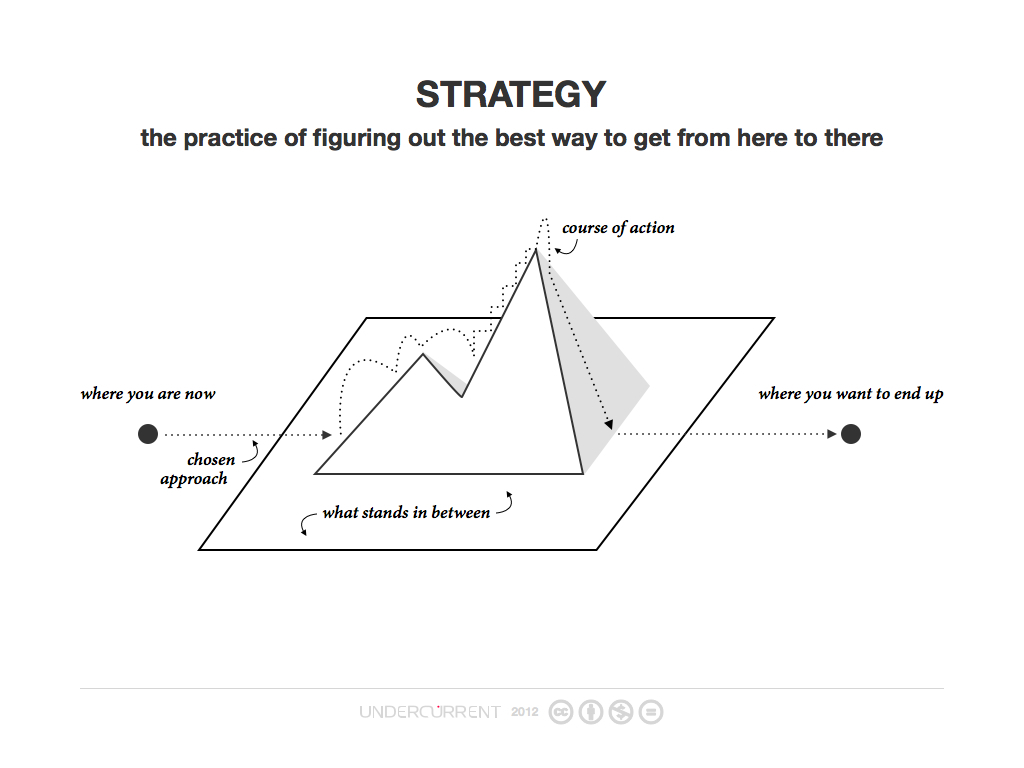
Those who deal with strategy in the digital world are still thinking in the footsteps of the ancient Greeks who invented the term strategos. It was used in
warfare, where the goal was to survive. It means “leader of an
army” beause leading an army was the way to reach that goal. French authors created the term stratégie in its modern meaning in the 19th century (Ortolang 2012). Since then it has been used as a term for goal-oriented, planned behavior in many fields, especially regarding business: “Strategy is the planned sustainable behavior of an
organisation to reach its goals” (Rappold 2020).
Let’s take this step by step:
The key formula is: Strategy = goal + path.
First you need a goal. A big business target you want to
reach. Without a goal everyone understands, a strategy cannot exist.
Then you craft your strategy, because strategy is the path to reach this
specific goal.
Strategy is the planned sustainable behavior of an organisation to reach its goals.
But, strategy is not something theoretical written on a set of nice PowerPoint slides. That won't make your business successful. It won’t even make it survive. Execution is key! Execution rules! The plan itself is super important but following that plan is the key. You will not survive without a strategy, but only if you’re good at executing your strategy you will be successful.
Strategy is dead: Strategy in a hypertransparent world #
You perform your business in a paradox situation. Your business won’t survive without a well executed strategy. Nevertheless strategy is dead. Why? Because we live in times of hyper-transparency (Tapscott & Tapscott 2010). Not long ago, businesses were able to do projects with large organisations where they learned important insights earlier than others and were able to use that early knowledge to their advantage as a part of their strategy.
But today we live in hyper-transparency. Everybody knows about everything. And even the most powerful governments in the world cannot keep things to themselves. Just remember Wikileaks. Or how fast media and especially social media are. You cannot expect to know things others do not know. You do not have that advantage anymore.
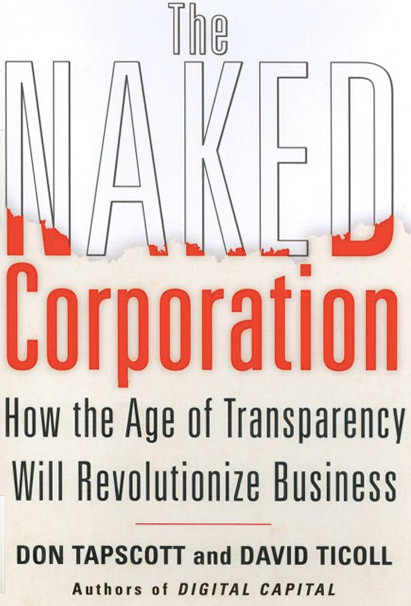
In Naked Corporation (2012) Tapscott and Ticoll argue that "people and institutions that interact with firms are gaining unprecedented access to all sorts of information about corporate behavior, operations, and performance. Armed with new tools to find information about matters that affect their interests, stakeholders now scrutinise the firm as never before. The corporation is becoming naked."
So, do not expect to have the one and only strategy no one knows about. Those times have passed. All businesses have similar strategies. And that is why strategy is dead. But remember: Execution is key.
Transparency as a result of digitisation means that strategies are not what they might have been in the past, something like secret recipes that others cannot recognise. But it is precisely in the digital world, in which changes have accelerated and in which attention spans have become short at the same time, that you need a strategy in order to survive in the long term. However, this strategy must take into account the special features of the digital world, be adapted to them.
Why do we need a strategy? Can’t we just wing it? #
The short answer is: No, you can’t just wing it.
Strategy helps us find the best way possible to get from A to B. It answers basic, but essential questions like “Why do we do what we do?” “What do we do?” “When do we do it?” and “Where do we do it?”.
Without strategy, we would not have a clear picture of everything that goes on in our organisation, nor would we have a foundation which we could reflect and base our decisions on.
A strategic framework not only helps with making decisions, but also serves as a guideline for the next actions that need to be taken. Without this quintessential foundation, our organisation would not work as one unit, resulting in little profits and success.
To make it even more clear, let us look at this question: What would be the opposite of strategic behavior? Well, of course opportunistic behavior. This means that you have a goal and a plan to reach that goal, but along the way you just stop and lose your strategic focus when an opportunity comes along. Sometimes those opportunities are really tempting, for example better cash flow or better margins. But they do not serve your big goal if they do not fit into your strategy and do have the potential to ruin everything - worst case.
Did you just think “Okay, I get that. But isn’t identifying opportunities and going for them one of the most important things for entrepreneurs to do?” Great objection! You’re absolutely right! So, how to deal with that paradox? Well, the main question is: How can you integrate those fantastic opportunities that come along in your strategy? The answer is simple: Use your brain, human. Watch out. Stay flexible. But: Follow your strategy! Always keep in mind and ask yourself “Is this opportunity on my strategic path or do I have to change my strategy path to integrate that opportunity?”
The purpose of a strategy is not a specific short-term success, because this short-term success is constantly threatened again in a very rapidly changing environment. The goal of a strategy is to be successful in a sustainable way, i.e., in such a way that success is not immediately called into question by the next change, but that the next success builds on it. This sustainability is the goal of the strategy. In an opportunistic approach, on the other hand, a single success can make further successes more difficult because it does not provide an overall direction for the organisation. It is likely that only parts of the organisation will participate in it. When it is achieved, the entire organisation will have to redefine its goals, losing time and energy. Strategy is necessary to achieve an objective. Goal setting itself, a part of the strategy process, is necessary to make the organisation capable of acting and thus surviving.
A good example is search engine optimisation. If an organisation is focused on short-term success, e.g. on advertising revenues through high page view numbers or conversion levels, it is on the one hand dependent on changes in Google's and other search engine manufacturers' algorithms. On the other hand, it will not invest in a content strategy that also ensures it achieves other successes over a longer period of time, e.g. through customer loyalty. It can thus be very successful for a certain period of time, but precisely for this reason it is incapable of adapting to changing conditions and systematically developing its own strengths.
How do we create a business strategy? Isn’t that, like, super hard to do? #
So far, we have talked about what strategy is, what hypertransparency means, and what we need strategy for. But how do we actually create a goal-oriented business strategy?
Fundamentally, it is not the strategy process as such that has changed in the digital world, but rather the environment in which it takes place and the goals toward which it is aligned. The environment has changed radically due to factors such as transparency, speed, the importance of technical innovations and the availability of capital. In this environment, strategic goals become relevant that were previously not conceivable at all, e.g., to remain permanently present with one's customers through content.
For defining strategic goals and the path for achieving these goals three questions are essential. They seem simple at first glance:
Why? What? How?
Phase 1: The review
But before we answer these essential questions, we need to reflect about ourselves and the world around us. Without this first phase we cannot decide whether our answers will be adequate for our situation and - more importantly - for ourselves. Therefore let us look at the very beginning of the strategy process - the review.
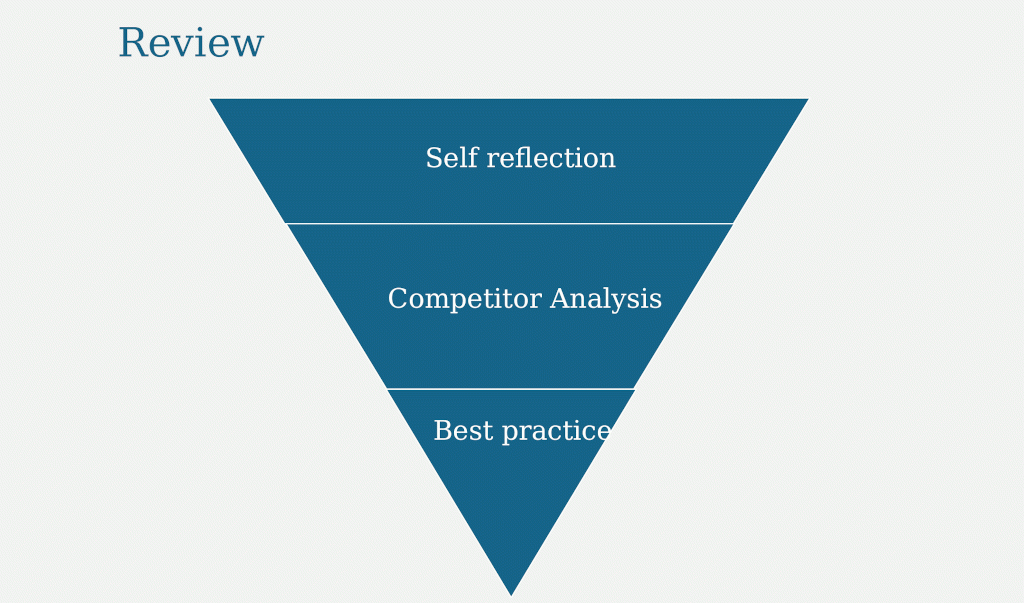
The three large fields of this review process are:
- Self reflection
- Competitor Analysis
- Best Practices
Without self reflection it is impossible to know your own
limits and to decide which of these limits you can and want to transcend. The competitor analysis will tell you whether you
can offer a value which is needed by the market and it will show what
others had to do to be able to move on the same field and where and why
they failed. The best practice analysis will show what is the state of
the art in your business field. The more an organisation reflects on
itself from the ground up, analyses its competitors and thus derives
best practices, the more realistic and precise it will be in setting
goals and defining ways to reach these goals. A strategy which is not
based on a thorough analysis risks failure because of unforeseen surprises.
Phase 2: The outlook
This first part is followed by the development of the strategic perspective, the outlook. This outlook can be well structured with the three key questions we have already mentioned: why, how, and with what result?
Simon Sinek has visualised these three key questions through his famous golden circle (TedTalks 2012).
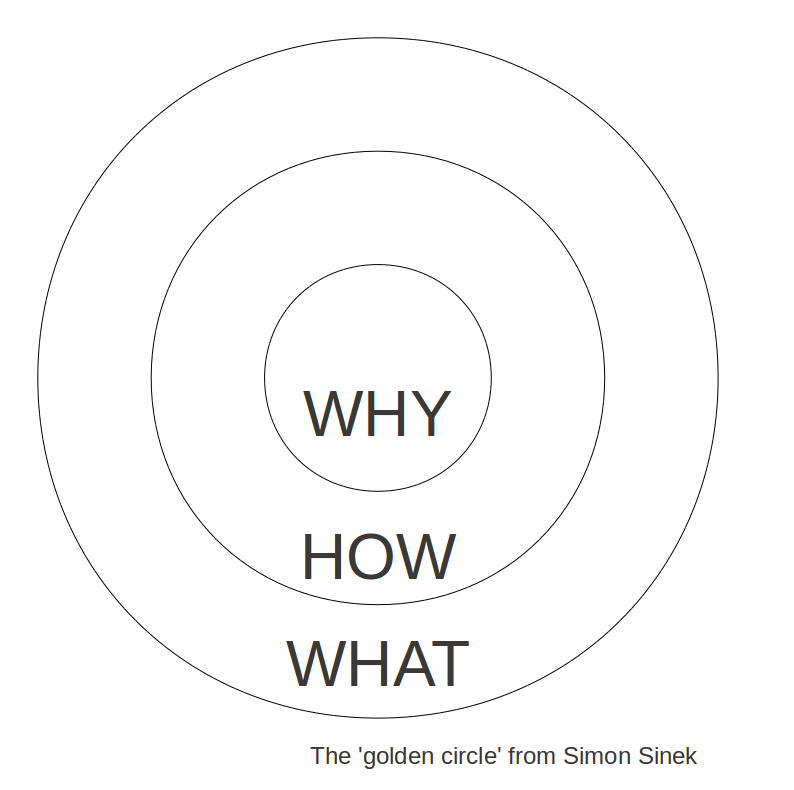
- Why? What is our motivation and our mission?
- What do we want to achieve?
- How do we reach our goals? Which measures do we need to take?
If this seems too abstract, here is an example from the real world:
Brand: Ferrari (sportscar manufacturer)
- Why: To be the best sports car manufacturer on the planet, representing Italy and inspiring people from all over the world.
- What: To be the most successful and best-known car manufacturer in motor sports, to dominate Formula 1 and produce top-class sports cars.
- How: To embody and promote the greatest possible commitment to motor sports, Italian values and traditions within the company and to prioritise quality.
It is crucial that all company employees know the answers to these questions, share the same view and work towards the same goal. Michael D. Watkins states that a "business strategy is a set of guiding principles that, when communicated and adopted in the organisation, generates a desired pattern of decision making" (Watkins 2007).
“A business strategy is a set of guiding principles that, when communicated and adopted in the organisation, generates a desired pattern of decision making.”
Tip: What you should pay special attention to when creating a business strategy is: Keep it simple. Reduce complexity. Separate the relevant from the irrelevant so as not to lose focus and sight of the goal.
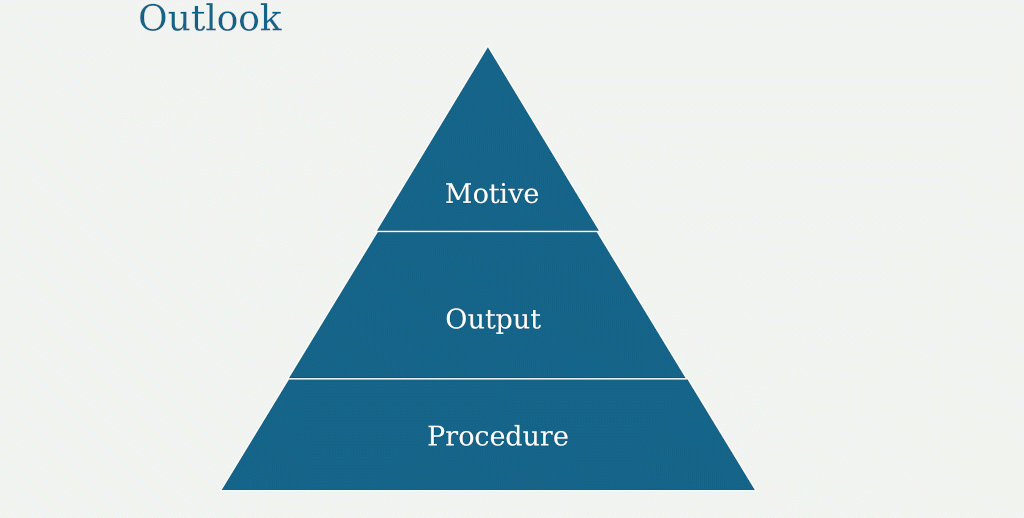
By looking back at where a company comes from, the outlook can also be defined by the three points
- Motives
- Output
- Procedure
The motives depend on self reflection, without which they cannot be named. The output is corresponding with the competitor analysis: It has to be something that is not offered by the competion. The procedure should be fixed based on best practices in the business field.
SMART Goals and Key Performance Indicators
These statements are obviously not so easy to verify. Therefore, strategic goals should be defined and aimed for, which concretise the vision of the company and make it measurable. Strategic goals have to be SMART (Doran 1981): Specific, measurable, attractive, realistic and time-based.
To measure our SMART goals for success, we need to define individual KPIs (Key Performance Indicators). In our example with Ferrari, these could be world championship titles in Formula 1 or increasing market share in the sports car sector by x%.
With this newly gained knowledge, the way to world domination (Edit: a successful business strategy) should be paved.
Still, there is so much more to know about successfully running a business. Different leadership types for example. Or did you already hear about the principle of Unbundling?
Presentation #
Click here for the presentation
Where to go from here #
In a further lecture of this course Dieter Rappold presented several strategy models which are relevant for content marketing and content strategy. The lecture will be documented in this knowledge base. Dieter's lecture about business analytics for startups is an introduction into the use of key performance indicators.
References #
Doran, G. T. (1981). There’s a SMART way to write management’s goals and objectives. Management Review, 70(11), 35–36.
Rappold, D. (2020, October 14). Strategy. Business Strategy for Digital Markets. #COS20, Graz WS 2020 1st presence teaching, OCT 14th 2020, Graz. https://drive.google.com/file/d/19OYkgf7hQ0MZnfCnVNcg8Kf2SZGjkF-q/view?usp=sharing
Stratégie: Etymologie de stratégie. (2012). In Ortolang. https://www.cnrtl.fr/etymologie/strat%C3%A9gie
Tapscott, D., & Tapscott, A. (2010, December 10). Macrowikinomics: Thriving in the Age of Hyper-Transparency | HuffPost. HuffPost. https://www.huffpost.com/entry/macrowikinomics-thriving-_b_794954
Tapscott, D., & Ticoll, D. (2012). Naked corporation: How the age of transparency will revolutionize business. Viking Canada.
Taylor, A. (2016, August 23). Hyper-Transparency Is More Than Just Hype | Blog | BSR. BST. https://www.bsr.org/en/our-insights/blog-view/hyper-transparency-is-more-than-just-hype
TedTalks. (2012, August 14). Simon Sinek—The Golden Circle—TedTalks 2009. https://www.youtube.com/watch?v=fMOlfsR7SMQ
Watkins, M. D. (2007, September 10). Demystifying Strategy: The What, Who, How, and Why. Harvard Business Review. https://hbr.org/2007/09/demystifying-strategy-the-what
This article is a student-written report on the content of a part of the course Brand Driven Content Strategy in the 1st semester of the M.A. program in content strategy.
It reflects the understanding of the content from the students' point of view and may therefore contain interpretations that do not coincide with the views of the instructor.

